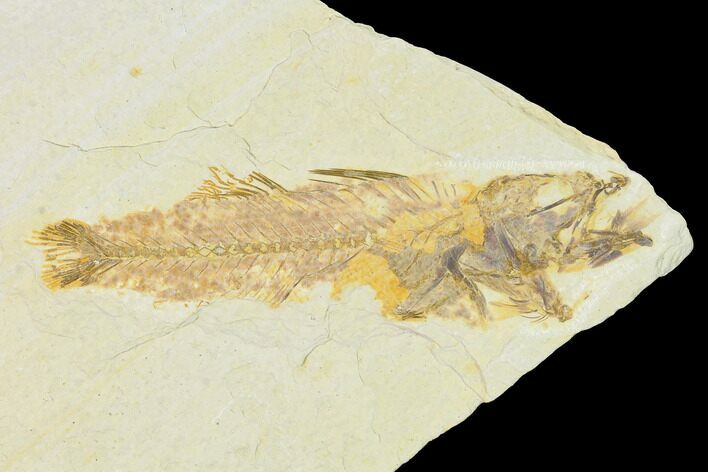This Specimen has been sold.
5" Fossil Fish Aspiration - Mioplosus Eating Knightia
This is a 5" long fossil fish (Mioplosus labracoides) from the Green River Formation near Kemmerer, Wyoming. Known as an aspiration, this fossil captures a Mioplosus that died trying to swallow its prey whole. The tail of the prey fish (likely a Knightia) can be seen in Mioplosus' jaws. It obviously bit off more than it could chew.
This specimen includes an acrylic display stand.
This specimen includes an acrylic display stand.
About Fossil Lake
50 million years ago, in the Eocene epoch, these fish thrived in Fossil Lake, which was fed by the Uinta and Rocky Mountain highlands. The anoxic conditions at the bottom of Fossil Lake slowed bacterial decomposition, prevented scavengers from disturbing corpses, and, most interestingly, suffocated creatures that ventured into the oxygen-starved aquatic layer. The result is a miraculous exhibition of Eocene biota: a subtropical aquatic community within sycamore forests, teeming with creatures such as freshwater stingrays, dog-sized horses, menacing alligators, early flying bats, and one of the first primates.
50 million years ago, in the Eocene epoch, these fish thrived in Fossil Lake, which was fed by the Uinta and Rocky Mountain highlands. The anoxic conditions at the bottom of Fossil Lake slowed bacterial decomposition, prevented scavengers from disturbing corpses, and, most interestingly, suffocated creatures that ventured into the oxygen-starved aquatic layer. The result is a miraculous exhibition of Eocene biota: a subtropical aquatic community within sycamore forests, teeming with creatures such as freshwater stingrays, dog-sized horses, menacing alligators, early flying bats, and one of the first primates.
SPECIES
Mioplosus labracoides
LOCATION
Fossil Safari Quarry, Kemmerer, Wyoming
FORMATION
Green River Formation
SIZE
5.0" fish, 7.6 x 4.7" rock
CATEGORY
SUB CATEGORY
ITEM
#104604
We guarantee the authenticity of all of our specimens.
 Reviews
Reviews














